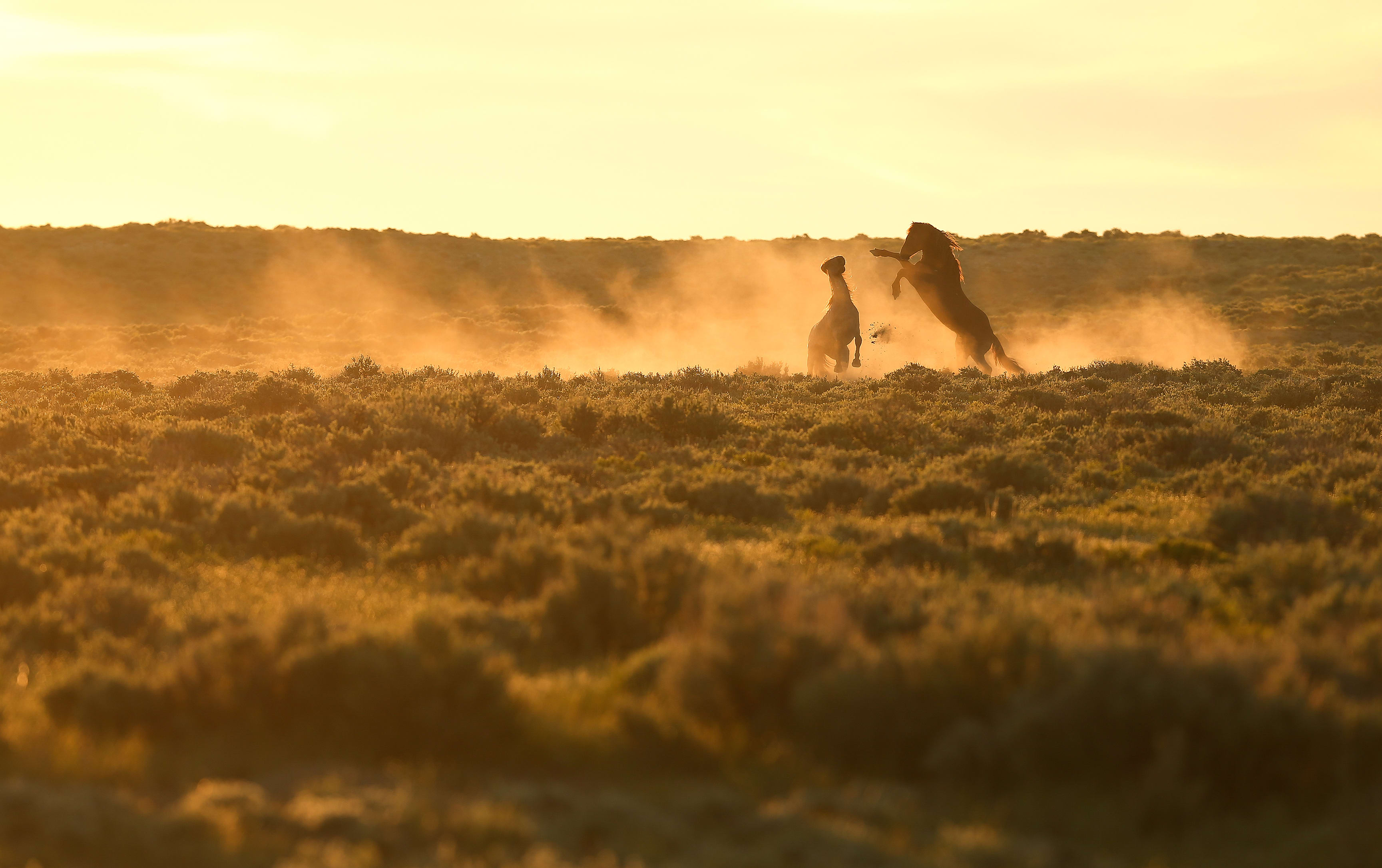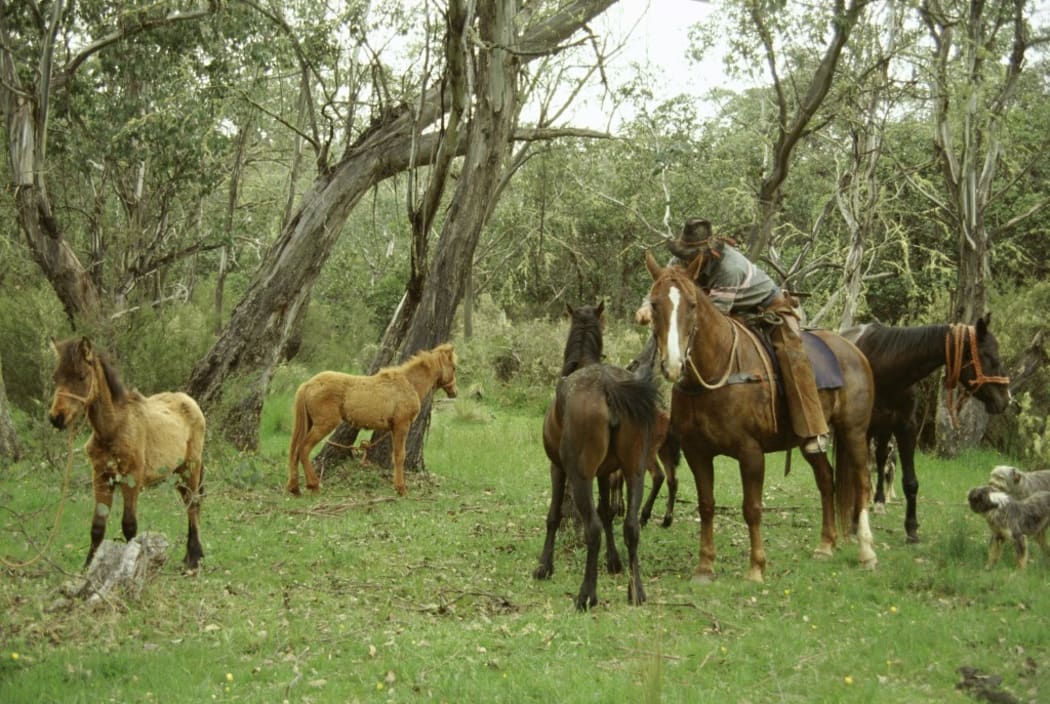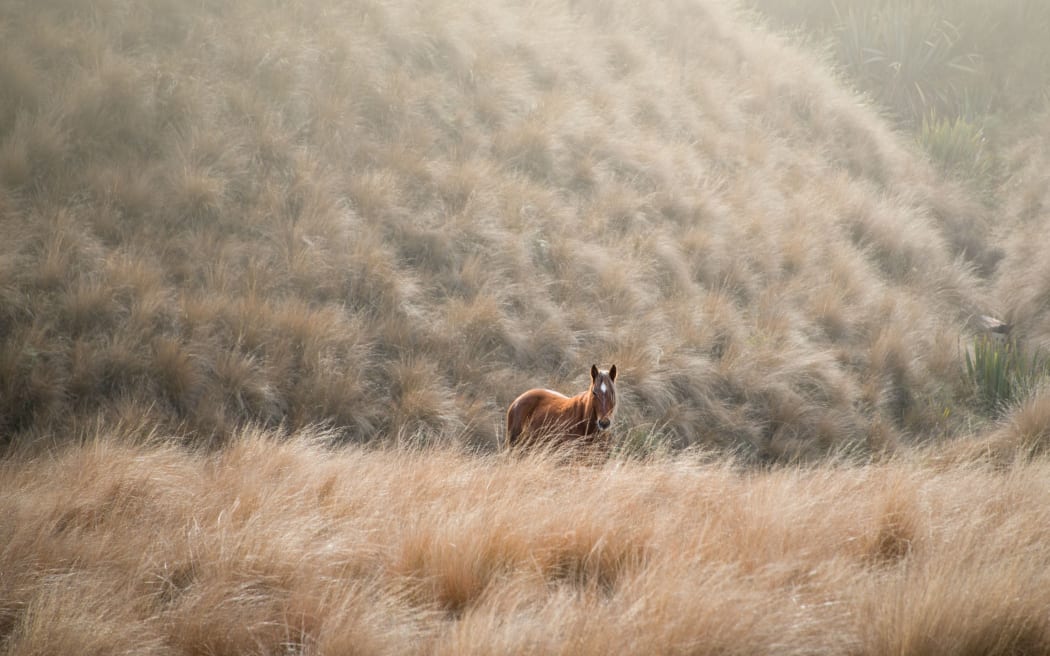People tend to instantly think of the Kaimanawa ferals when the subject of wild horses comes up, but there is a significantly larger number in Northland - as many as 2000.

Dust flies as two stallions fight at sunrise. Photo: Supplied
In 2012 Kelly Wilson's family saved 12 Kaimanawa horses from slaughter and then two years later they had their TV show Keeping up with the Kaimanawas when they successfully tamed another 12.
Kelly appeared on the TV series with her sisters, Vicky and Amanda, and has also written four best-selling books about horses.
An adventurer who "loves anything to do with an adrenalin rush", she enjoys ice climbing, scuba diving and snow boarding wherever she is in the world.
"But a lot of my time now is invested into wild horses and both photographing them in the wild and then taming them first-hand and then writing the books about them."
Kelly's new book, Wild Horses of the World, is a study of the diverse beauty of the world's wild horses and the harsh, yet picturesque landscapes they call home.
She was surprised to discover that the Northland wild horses which live on restricted forested land hugely outnumber those in the Kaimanawas, but are rarely heard about.
The Northland herds have been left alone which has allowed them to become overpopulated and last summer during the drought it became a welfare issue.
"I'd say the Kaimanawas are some of the luckiest, happiest, healthiest horses I've seen around the world. I saw some very unhappy and unhealthy horses in the Far North which was quite stressful to see but no comparison to some of the horror stories I saw in Australia."
Management of the wild horses is a controversial issue across the Tasman because they have such large herds and not so many can be saved. In the Snowy Mountains the snowy Brumbies are able to be controlled because they number under 15,000.
"Then you get down to the desert and they have at least 400,000 to 500,000 horses and six figures being culled each year and it's almost insurmountable the issues they're facing."
Lack of predators
In New Zealand and Australia where there are no predators there is a responsibility to ensure herd sizes remain healthy, Kelly said.
"The reason New Zealand can do it so well is because we made those changes 25 years ago [with the Kaimanawas] so I think just ignoring it and pretending it's not a problem until it's really bad like in Australia, then suddenly that's a massive issue.
"In the desert up to 70 percent of the herds can die in a drought year and if we're talking of an area that has up to half a million horses that's a lot of horses that are suffering."
She said there were a large number of factors that needed to be taken into account when deciding the best way of managing a herd.

Some brumbies being rounded up in Victoria in Australia. (file pic) Photo: AFP
Asked why we needed to save wild horses, she said it was important to have a viable herd in the wild so that domestic horses can be compared to their wild counterparts and to appreciate how horses behave in the wild because they change so much when they come into the human world.
Horses communicate constantly
Kelly said wild horses are sensitive to dangers such as hungry wolves and bears and also behave differently and seem uneasy when she is trying to photograph them.
"The body language and how they communicate and the levels of energy and tension in something is way beyond what humans can understand..."

A wild horse roaming in the tussock in the Kaimanawa mountain ranges. Photo: 123rf.com
She said while some will wilt if penned and left alone, others thrive in people's company. It's all down to how they are handled.
"We've had ones that were very battle-scarred in the wild and they really appreciate human company and the ease they can find in domestication and companionship."
Horses are constantly communicating, she said, and people working with horses need to recognise this. They can heal people and have been used to support troubled teens and former soldiers, Kelly said.
"If you can teach a person to read a horse's emotions and what they're trying to express, it gives them so much patience and so much knowledge for human interaction.
"That's what I found amazing - how much horses are teaching me about humans."

